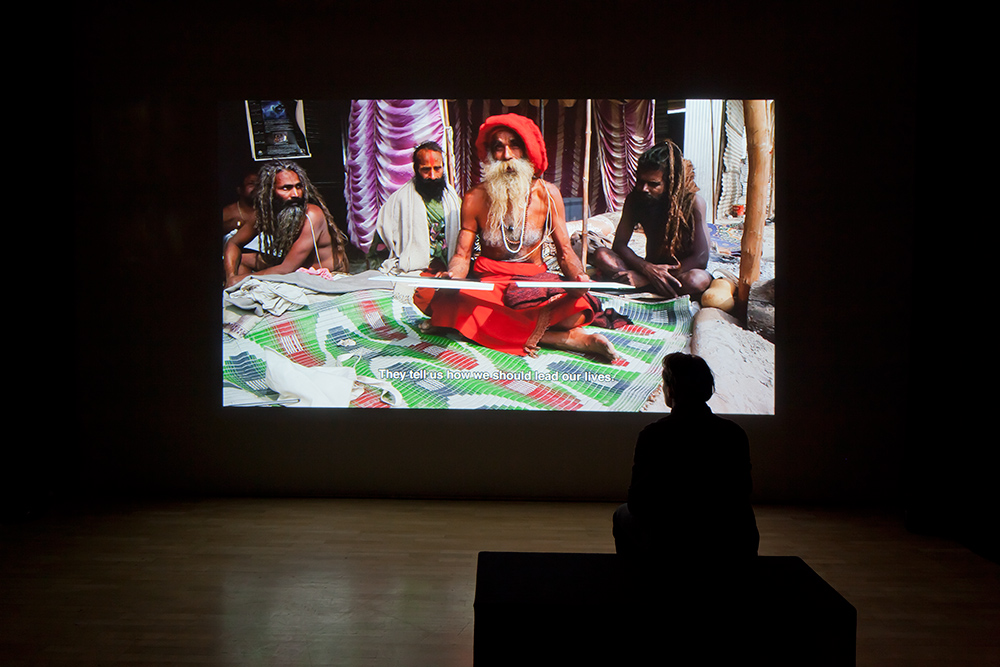


KAY WALKOWIAK. MAKING SENSE OUT OF ABSTRACTION
Salzburger Kunstverein, Salzburg (AT)
06.02.2014 – 21.04.2014
Curator:
Hemma Schmutz (AT)
What you see is – what you see
In Making Sense Out of Abstraction Kay Walkowiak asks Indian ascetics to speak about simple geometrical objects that he hands them at Maha Kumbh Mela, the largest religious gathering in Hinduism. The objects are unremarkable wooden boards, the surfaces of which have been painted in the minimalist style. White, beige, black, gray, red, blue. The highly respected ascetics in India are believed to possess higher truths and can be consulted during the festival on questions or issues of earthly life.
For 8 minutes and 46 seconds the film shows us the eventful moment in which the artist hands over his objects to others. Like in his earlier pieces, this work is also about visualizing the point at which an object slips from the artist’s control by attracting the sustained attention of others and, as a result, is re-territorialized by them. Kay Walkowiak’s objects do not remain at rest but rather circulate through the world: between hands that reach for them, fingers that touch them, eyes that look at them closely, and language registers that are called upon to help extract symbolic meaning from them. In this sense, they function conceptually as monochromatic geometric voids that claim to be filled with significance and meaning on their own.
An artistic approach reminiscent of the old tradition of Indian instructional texts. They also consist of a collection of short, memorable aphorisms (sutras) in which the teaching material is condensed to its minimalist essence to the point that it is barely understandable without commentary (bhāṣya). As an open, fragmentary structure, a sutra collection thus calls for interpretation in which its many meanings and layers are unlocked – enabling it to become what it is: an open structure yearning for the power of imagination.
“What you see is what you see,” said Frank Stella of his work. The film Making Sense Out of Abstraction bluntly displays the truth of this line. What you see when you hold simple geometric wooden boards in your hands, touch them, turn them over, examine their intrinsic attributes and movement possibilities, and reflect on linguistically available interpretive models is what gives you the imaginative power to see. In this sense, the work acts as an exhibition space for imaginary projection surfaces. Hence, the film is about that which the Maha Kumbh Mela has always been about: “Making Sense.”
Not only the sadhus, who confronted Kay Walkowiak’s geometric objects, but also we, as visitors to the exhibition of his documentary film, are afflicted as viewers with the call to fill the voids raised by his work with our own claims of sense and thus assign it libidinous meaning by allowing space for our desiring-machines.
Text: Arno Böhler, Vienna / Salzburg 2014
Photos: Salzburger Kustverein / Andrew Phelps